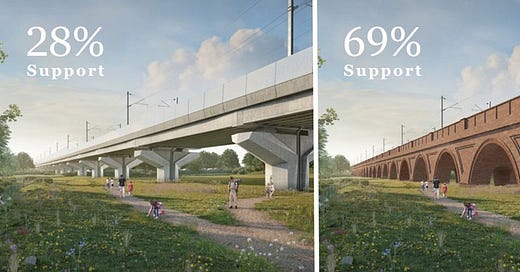We are sometimes called supply guys.
It’s a name we’ve taken to. Progress Ireland thinks building things — from housing to roads, tunnels, transmission lines, companies and government agencies — is the way forward for Ireland.
When it comes to housing specifically, we think Ireland needs to build an intimidating number of new homes to bring down rents. We think every new home that’s built, whether market rate or state subsidised, alleviates pressure and lowers rents across the whole system. We think clearer, more rational planning rules would encourage more housing. We think gold-plated regulations drive up housing costs.
If believing these things makes us supply guys, then supply guys are we.
Though our commitment to building a better Ireland is total, there are pro supply policies we don’t promote. It’s these policies we want to talk about today.
These pro-supply policies we oppose, not because we think they wouldn’t work, but because we think they wouldn’t be popular. Popularity matters when it comes to housing. There’s no point introducing a measure that is broadly hated by the public. In the long run, it will be repealed.
The best housing policies are ones that deliver more supply and are broadly popular. Or at least, not hated. That’s the sweet spot.
You might think a policy that succeeds in solving Ireland’s most pressing problem would be inherently popular. Housing is a funny problem, though. It resists resolution by democratic governments. That’s because a) even in an acute housing shortage, most people are adequately housed and b) building new housing is often unpopular with locals.
Any enduring solution to the housing crisis has to thread a needle. It needs to a) actually deliver lots of homes while b) not angering large numbers of voters or c) not angering small, well-organised groups of locals.
Here’s a big list of policies that didn’t stick because they were unpopular, or unworkable for one reason or another. We can learn from their failures.
Aggressive blanket relaxation of planning rules. This doesn’t happen very often – perhaps because politicians know what side their bread is buttered on – but when it happens, it doesn’t tend to work. New Zealand tried it. In 2021, New Zealand’s Labour government entered a Sláintecare-like pact with the biggest opposition party, the National Party, to loosen zoning across the country. The plan legalised three story townhouses in New Zealand’s five biggest cities as well as five-story townhouses near to transit stops. The policy went ahead, but it was unpopular with the public. A small libertarian party seized the opportunity to oppose the upzoning policy and was rewarded with a sharp rise in the polls. The National Party was forced to sack its leader and do a U-Turn on its support for mass upzoning. Labour stuck with the policy, and in 2023, duly lost the next election to the National Party. Since then, the National Party hasn’t given up on planning reform, but it’s doing it in a more measured and calculated way.
Piecemeal solutions. Piecemeal housing policies are released one by one, over time. The problem with piecemeal housing policy is that the opponents of each individual measure get a chance to air their views. They also stay unified. Beneficiaries rightly feel like each incremental policy won’t solve the problem. We’ve seen this recently in Ireland, with the debate over seomraí. The 15 per cent of the population opposed to the policy got ample time to air their views in public. The remainder are told that this policy won’t solve the problem.
Unfair solutions. California has implemented a “builder’s remedy” whereby density caps are thrown out the window in the event that city planning rules clash with state planning rules. The builder’s remedy punishes local governments for limiting development too aggressively by allowing ultra-dense building. This is certain to enrage locals and invite long-run backlash. Developers, wary of these projects’ unpopularity, have been slow to take advantage.
Fast tracks and shortcuts. Strategic housing developments were Ireland’s effort to fast track housing. They didn’t work because the courts found they weren’t compatible with existing planning law. This is a common pattern: policy makers, frustrated with the slowness of the system, try to circumvent it. This was Elon Musk’s strategy with DOGE. But enduring reform doesn’t come from ignoring existing rules, as frustrating as they may be. The rules must either be reformed, or a new legal mechanism must be created.
Administratively complex solutions. Housing is a huge part of the economy. For solutions to work, they need to scale well. Finicky solutions that are legally or bureaucratically complex don’t scale well. The original land value tax, proposed by Henry George and implemented by Herbert Asquith, was a colossal failure because it cost more to administer than it raised in revenue.
Railroading local governments. Local governments are often bastions of nimbydom. Their voters care less about national housing or infrastructure shortages than about their own communities. Central governments have often attempted to force local governments to build more, but the track record is mixed. In New Zealand, local governments got creative and found ways around the drafting of the national government’s housing targets. In the UK, local governments have had housing targets forced upon them by Westminster. They have responded by building, not where people want to live, but where opposition to housing is weakest.
Unpopular building styles. People oppose new building for many reasons. One of them is the perceived ugliness of new development. When people are surveyed on the architectural styles they prefer, they are pretty consistent – about 75 per cent of people reliably say they prefer traditional styles to modern ones. Architects and designers, by contrast, prefer modern styles to traditional ones in roughly the same proportions. There is a disconnect between the people who design buildings and the people who have to look at them. This design disconnect is a tax on new housing and infrastructure. The following shows alternative designs for a new viaduct near Birmingham, part of HS2. The polling was carried out by Create Streets, a campaign group.
Over and over, modernist buildings go unmaintained, rot, and eventually are torn down. Buildings, like policies, must be popular if they are to endure.
What policies, then, can deliver lots of homes without angering locals? It can be done, both for housing and infrastructure. The trick is to give locals a good reason to say yes to development.






